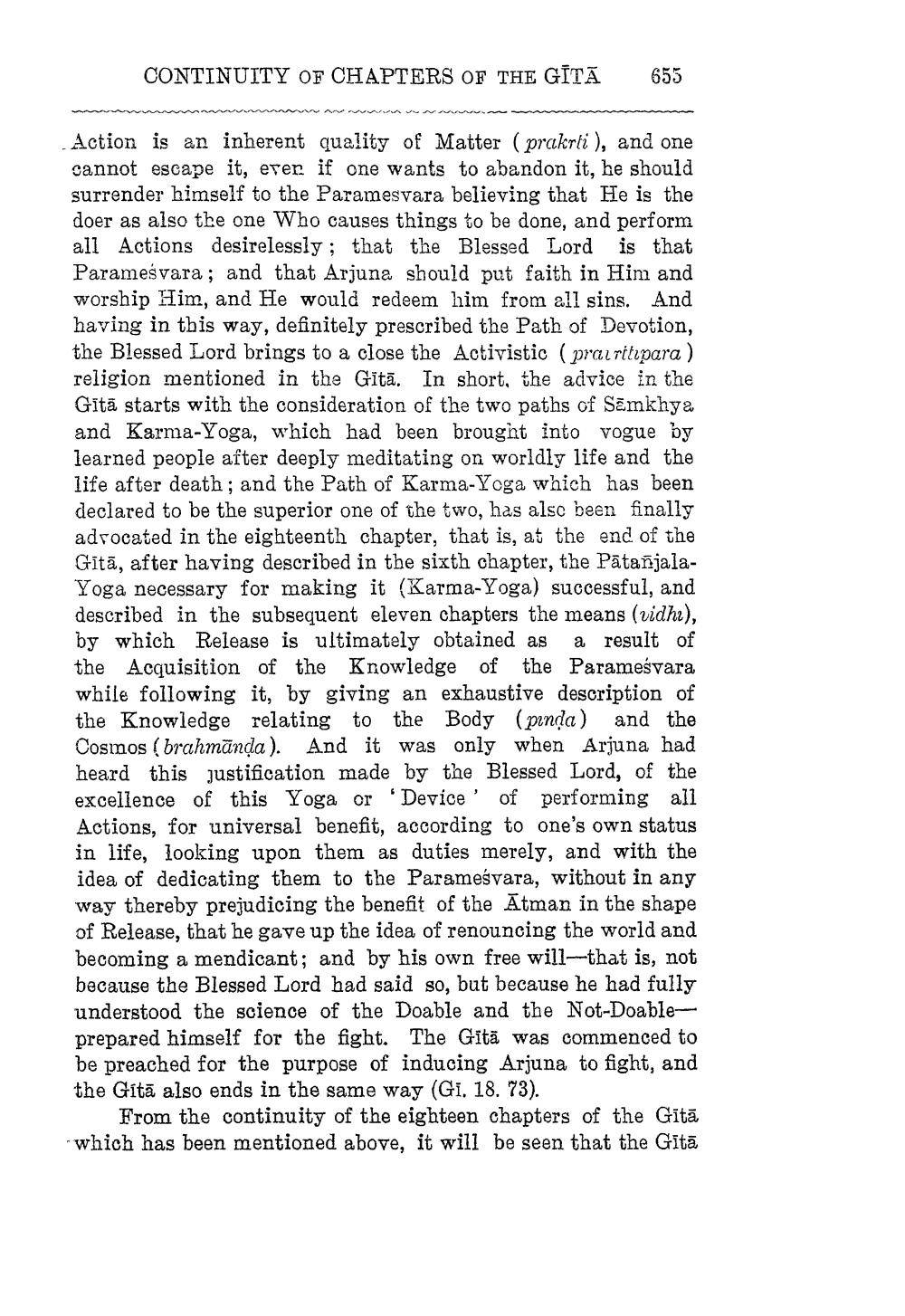________________
CONTINUITY OF CHAPTERS OF THE GĪTĀ
653
Action is an inherent quality of Matter (prakrti), and one cannot escape it, even if one wants to abandon it, he should surrender himself to the Paramesvara believing that He is the doer as also the one who causes things to be done, and perform all Actions desirelessly; that the Blessed Lord is that Parameśvara; and that Arjuna should put faith in Him and worship Him, and He would redeem him from all sins. And having in this way, definitely prescribed the Path of Devotion, the Blessed Lord brings to a close the Activistic (pra ritpara) religion mentioned in the Gītā. In short, the advice in the Gītā starts with the consideration of the two paths of Samkhya and Karma-Yoga, which had been brought into vogue by learned people after deeply meditating on worldly life and the life after death; and the Path of Karma-Yoga which has been declared to be the superior one of the two, has alsс been finally adrocated in the eighteenth chapter, that is, at the end of the Gītā, after having described in the sixth chapter, the PātañjalaYoga necessary for making it (Karma-Yoga) successful, and described in the subsequent eleven chapters the means (vidhi), by which Release is ultimately obtained as a result of the Acquisition of the Knowledge of the Parameśvara while following it, by giving an exhaustive description of the Knowledge relating to the Body (pinda) and the Cosmos (brahmanda). And it was only when Arjuna had heard this justification made by the Blessed Lord, of the excellence of this Yoga or 'Device' of performing all Actions, for universal benefit, according to one's own status in life, looking upon them as duties merely, and with the idea of dedicating them to the Parameśvara, without in any way thereby prejudicing the benefit of the Atman in the shape of Release, that he gave up the idea of renouncing the world and becoming a mendicant; and by his own free will-that is, not because the Blessed Lord had said so, but because he had fully understood the science of the Doable and the Not-Doableprepared himself for the fight. The Gitä was commenced to be preached for the purpose of inducing Arjuna to fight, and the Gítā also ends in the same way (Gi. 18. 73).
From the continuity of the eighteen chapters of the Gītā, which has been mentioned above, it will be seen that the Gītā




